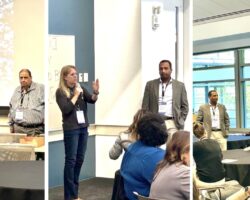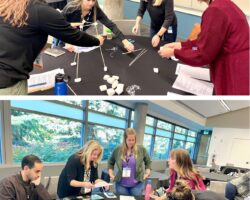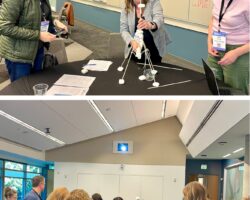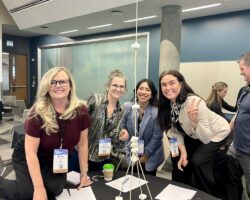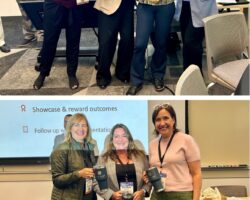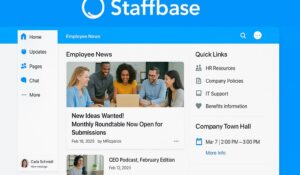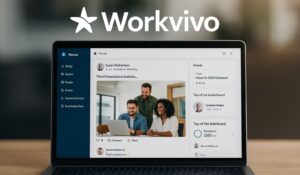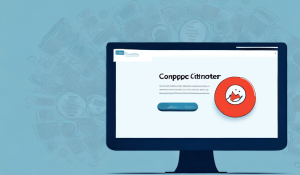Culture isn’t something you declare — it’s something you build, one idea at a time. And sometimes, the best way to build it is by breaking the routine. That’s where a hackathon culture comes in — a fun, fast-paced, and collaborative way for employees to roll up their sleeves, tackle challenges together, and shape the culture they want to be part of.
At HubEngage, we recently hosted a live session at the Ragan Internal Communications Conference in Seattle titled “Hack-A-Thon Your Culture.” The event showcased how organizations can run internal hackathons to transform company culture, drive engagement, and turn employee ideas into meaningful action.
What Is a Hackathon for Culture?
A hackathon for culture takes the principles of traditional hackathons — collaboration, creativity, and rapid problem-solving — and applies them to organizational challenges. Instead of coding, teams work on real workplace issues such as improving communication, strengthening recognition, or enhancing the employee experience.
These internal hackathons are short, time-boxed events that bring employees from different departments together to ideate, build prototypes, and present solutions. The focus is on participation, not perfection — giving everyone a voice and a chance to shape the culture they’re part of.
Why Hackathons Work for Culture Building
The power of a hackathon culture lies in its structure. It transforms passive engagement into active collaboration.
1. Cross-functional collaboration: Employees from different roles and levels work together, breaking silos and building empathy.
2. Ownership and empowerment: When employees generate and pitch their own ideas, they feel more invested in the company’s success.
3. Innovation in action: Time-boxed problem-solving sparks creativity and brings fresh perspectives to everyday challenges.
4. Visible leadership support: When executives participate as mentors or judges, it reinforces trust and transparency.
5. Recognition and celebration: Highlighting participants’ efforts and implementing their ideas boosts morale and shows that every contribution counts.
Building Blocks of a Successful Hackathon
Before diving into planning, it’s important to understand the essential building blocks that make a hackathon culture thrive:
• Clear Purpose: Align every hackathon with your company’s strategic goals and cultural priorities.
• Defined Challenges: Target real problems that employees face and care about.
• Time-Boxed Structure: Keep sessions focused and dynamic — one to three days or shorter sprints.
• Tools & Resources: Provide communication channels, collaboration tools, and mentorship support.
• Recognition & Rewards: Celebrate effort, creativity, and participation, not just the winning idea.
How to Organize a Successful Internal Hackathon
Creating a successful hackathon culture starts with clear planning and purpose. Here are key steps to follow:
1. Define the purpose: Link the hackathon to company goals — whether it’s improving engagement, enhancing communication, or building trust.
2. Choose meaningful challenges: Focus on problems that matter to employees. For example: “How might we make it easier for frontline workers to share feedback with leadership?”
3. Set time limits: Keep it focused. Even a 2-hour or 1-day hackathon can drive results.
4. Provide the right tools: Use engagement platforms like HubEngage to manage communication, collect ideas, recognize contributions, and track progress.
5. Reward participation: Celebrate creativity, collaboration, and effort — not just the final outcome.
How to Form the Right Teams for a Hackathon
One of the secrets to a successful hackathon culture is building diverse, cross-functional teams. Each role brings a unique perspective that helps turn ideas into actionable outcomes.
1. IT Representatives: They ensure feasibility, compliance, and technical soundness. Their insights help define what’s possible within systems, data, and security frameworks.
2. Internal Communications: These team members focus on messaging, storytelling, and how ideas are communicated across the organization. They help shape how solutions are introduced and adopted.
3. Human Resources: HR keeps the hackathon aligned with company values and culture. They help identify challenges tied to engagement, recognition, and employee well-being.
4. Executive Sponsors: Leaders provide strategic alignment and visibility. They guide teams on budgets, constraints, and how ideas can connect to organizational goals.
5. Managers and Employees: The core participants who bring ground-level perspectives, practical experience, and creative energy. Their ideas make solutions relevant and realistic.
Bringing these roles together creates balanced teams that can think broadly and execute effectively — the hallmark of a thriving hackathon culture.
The Run of Show: A Hackathon in Action
A simple structure keeps momentum high and teams aligned. Here’s a quick example of a 10-minute mini hackathon framework:
• 0:00–0:30: Introduction and challenge briefing.
• 0:30–1:00: Teams define roles and plan.
• 1:00–4:00: Build the foundation.
• 4:00–7:30: Test, iterate, and refine.
• 7:30–9:30: Finalize designs and prepare presentations.
• 9:30–10:00: Demos and scoring based on height, stability, and story.
This structure emphasizes time-boxing, collaboration, and early prototyping — all critical skills that translate directly to workplace innovation.
Real-World Example: Hack-A-Thon Your Culture at Ragan
During our session at the Ragan Conference, participants experienced the power of hackathons firsthand. Teams formed, roles were assigned, and everyone was tasked with building the tallest freestanding tower using marshmallows, sticks, and thread. The goal wasn’t just to win — it was to learn how collaboration, iteration, and communication drive success.
The results were inspiring. Participants shared stories from their own organizations — like BNSF and Microsoft — where internal hackathons have helped improve communication, break down silos, and give employees a platform to innovate.
It was clear that a hackathon culture can create a ripple effect — turning small moments of collaboration into lasting cultural change.
Research supports this approach. Studies show that when employees and multiple stakeholders are actively included in decision-making, productivity, innovation, and engagement significantly improve. For instance, a Scholar Publishing study found that participative decision-making has a strong positive correlation with organizational performance. Similarly, MDPI research shows that employee involvement combined with leadership support boosts the success rate of change initiatives. Harvard Business School also notes that team decision-making leads to better outcomes and higher engagement by surfacing diverse perspectives. In short, when everyone has a say, the chances of success rise dramatically.
Benefits of a Hackathon Culture
Including insights from our Ragan session, we observed measurable engagement boosts and positive feedback from participants. Many noted that even short, structured hackathons increased collaboration and helped employees see tangible results from their ideas. Quotes like “We actually felt heard” and “This felt like a safe space to innovate” underscored the cultural impact.
- Encourages open communication and trust.
- Builds stronger, more connected teams.
- Sparks innovation and continuous improvement.
- Transforms feedback into tangible outcomes.
- Increases employee engagement and retention.
By turning engagement into a shared experience, hackathons make culture-building a hands-on, high-energy process that everyone can take part in.
Key Takeaways from Building a Hackathon Culture
- Define clear goals and challenges that align with your organization’s strategy.
- Encourage cross-functional collaboration to blend skills and perspectives.
- Prototype early, test ideas quickly, and iterate often.
- Ensure leadership buy-in to build credibility and sustain engagement.
- Measure outcomes to turn learnings into actionable results.
How HubEngage Supports Hackathon Culture
With HubEngage’s multi-channel employee engagement platform, organizations can easily set up and manage internal hackathons from start to finish. Our platform helps you:
- Launch and promote company-wide hackathons.
- Collect and prioritize employee ideas.
- Facilitate real-time collaboration across teams.
- Recognize participants and share success stories.
- Track engagement metrics and outcomes over time.
By combining communication, recognition, and collaboration tools in one platform, HubEngage makes it simple to build a hackathon culture that inspires continuous innovation and connection.
FAQs About Hackathon Culture
How do you measure the success of a hackathon culture?
Track engagement metrics such as participation rates, idea submissions, and follow-through on implemented solutions. Survey feedback and cultural sentiment analysis can also reveal long-term impact.
How can organizations sustain a hackathon culture long-term?
Host smaller quarterly innovation sprints, recognize ongoing contributions, and integrate the most successful ideas into company-wide initiatives. Maintaining leadership support and communication momentum ensures continued success.
What is a hackathon for culture?
A hackathon for culture is an internal event that invites employees to collaborate and develop creative solutions to workplace challenges. It focuses on improving culture, communication, and engagement rather than technical projects.
How long should a hackathon last?
Most cultural hackathons can be completed in a single day or even a few hours. The key is focus — short, time-boxed sessions keep energy high and results actionable.
Who should participate in an internal hackathon?
Everyone! The more diverse the participants, the richer the ideas. Include employees from different departments, levels, and locations.
How can technology support hackathon culture?
Platforms like HubEngage help streamline planning, communication, recognition, and follow-up — making it easier to organize and sustain hackathons at scale.
What outcomes can companies expect?
Improved collaboration, stronger engagement, faster problem-solving, and a culture where employees feel empowered to shape the organization’s future.
#HackathonCulture #EmployeeEngagement #CompanyCulture #InternalComms #HubEngage #TurnOnEngagement


